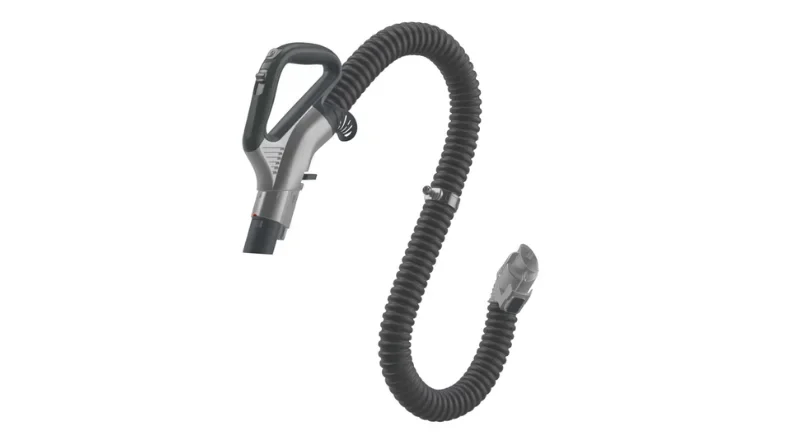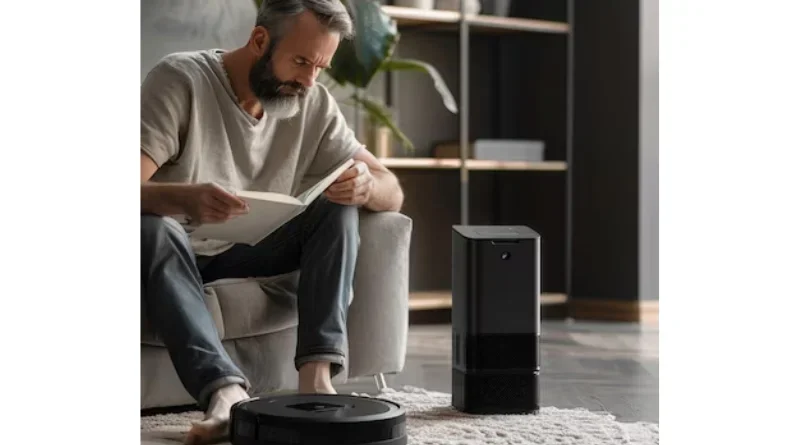The Shark DuoClean vacuum cleaner cleans well and gets rid of dirt well. A lot of people around the world like it. Two brush rollers on DuoClean clean rugs and hard surfaces of dust, dirt, and pet hair. A lot of people who own vacuums need to remember about the hose. Despite being useful for sweeping, there are other tools for cleaning than the vacuum tube. The cleaner will work less well as time goes on because the hose will wear out and get clogged.
How to Fix Shark DuoClean Vacuum Hose?

If your Shark DuoClean line is giving you trouble, follow these steps to get a new one. You can fix your vacuum and clean your room!
Identifying Hose Problems
The vacuum cleaner’s hose may cause poor suction, unusual sounds, or unclean spots after cleaning. Blockage or damage to the hose reduces vacuum cleaner efficiency. Stuck vacuums lose power, making dusting and dirt collection more manageable. Small hose breaches that allow air escape may generate buzzing, popping, and hissing.
Stand the vacuum cleaner hose up and observe whether dirt or dust falls out to check for a blockage. Check for hose blockages using a brush. Bending the hose may reveal cracks and leaks. When you start the vacuum, check the hose neck for air. Changing or repairing the vacuum’s hose may fix it.
Troubleshooting Techniques
If your vacuum doesn’t pick up dirt, check the hose to see if it’s stuck. First, turn the cleaner off and remove the cord. After that, take the hose off slowly. You can now see both ends of the hose. Please do not use a straight or sharp coat hanger to push the trash because it could damage the hose. Instead, use a bent one. Wipe the hose clean with warm water and mild soap. Then, let it dry whole.
That person can clean the hose and check the filter and brush rollers to see if the pressure is off in any way. Following the manufacturer’s directions is very important when cleaning or changing a filter that is stuck. Other parts of the vacuum often block the air passage. To make sure the packing is right, take hair, threads, and other things out of the brush rollers. These tips make sure the vacuum works well, which means there are few changes to the plan.
More Gadget Things: 7 Best Noise Cancelling Earbuds for Airplane: Block Out Airplane Noise
DIY Repair Steps

For a simple fix, all you need is a tool, duct tape, any replacement parts, and so on. First, look at the broken area to see if it’s something you can handle by yourself. For now, duct tape might work to fix small tears. Before you tape the rip, wash and dry it so that it doesn’t get wrinkled. If you can, stitch or glue the cloth instead of tape.
After the fix, make sure that everything is back where it belongs. Before putting a loose panel or ornament back on, make sure that each one is tight. Press or pull on the repaired area to see if it moves a little after everything is fine. Replace and tighten any screws or bolts that were taken off during the process. These steps generally get things back to normal and let you make plans for a lasting fix if needed.
Replacing the Hose

Before you put on a new hose, look at a sticker on the Shark DuoClean Vacuum cleaner to see the model number. You can usually find model-specific lines on Shark’s website or at approved suppliers. Make sure the hose fits the type before you buy it.
To avoid getting an electric shock, unplug the vacuum before putting the hose back on. Attachments on the base or handle of the cleaner hold the hose in place. Take off the clamps and carefully take off the old hose. So that there is no loss of pressure, the new hose should fit snugly on the joining points. It’s time to test everything, so put the screws and clips back in place and then turn on the vacuum.
Maintenance Tips
Every couple of months, you should clean your vacuum line by taking it off and running it under warm soapy water. Let it dry naturally, and then put it back on. While you’re at it, look for cracks or clogs that could be stopping the flow. If not, it is important to check and empty a vacuum bag or bin often because a full container can wear out the hose and make it work less well. Check filters for dirt every so often and replace them when the maker says to. By taking these preventative steps, you can be sure that the vacuum will last longer and that the hose will properly move air and suction.
#1. Clean the Hose Regularly to Prevent Clogs
While dust and dirt can block other equipment’s suction, they can also block your vacuum’s hose. Every couple of months, take the vacuum line off and wash it in warm soapy water. Before putting the hose back together, dry it by hanging it up to dry. This gets rid of dust and grime and keeps dirt from building up and getting in the way.
#2. Check for holes and cracks
The hose can’t break or leak so the vacuum cleaner can work right. A few small cracks or worn-out parts in the hose could let air out and reduce the pressure effect. Run your fingers along the hose slowly to feel for bumps. If it’s hard to see damage, shine a bright light on it. If there are cracks in the hose, cover them with hose tape or repair them.
#3. Avoid Sharp Bends and Tangles
Cleaner tubes are bendable, but if you bend or knot them too tightly, you could damage the inside and make it harder for air to move. Don’t over tighten the hose on your vacuum cleaner when you put it away. Set it up so it bends the least to get the most air flow. Avoiding wear and tear that isn’t necessary can help your hose work better and last longer.
#4. Empty the Dust Bin or Replace the Bag Regularly
While trying to push dirt back into the system, a vacuum sucker that is clogged will put stress on the hose. To avoid problems, take out the trash or bag when it’s full. This makes the air move better and stops the hoses from getting clogged or tense.
#5. Replace or Clean Filters Frequently
When the filters are dirty, they let hot air into the engine, which hurts the motor and hose. Check your vacuum once every 30 days and follow the manufacturer’s guidelines to clean or change the filters. When filters are clean, air flows quickly through them, which increases vacuum force and lowers the risk of hose damage.
#6. Store Your Vacuum Properly
The point of storing a hose is to keep it in good shape for a long time. To keep the hose safe from sharp edges and other dangers, coil it up after each use. Keep the vacuum in a dry place to keep the hose from breaking down.
Conclusion
For the most part, vacuums work better after their vacuum lines have been fixed or changed. The process is easy and only takes a little work from the owner, so it doesn’t cost much to fix. Checking and cleaning the vacuum’s hoses are important maintenance tasks that help make sure it always works at its best. By doing the things listed above, you can easily keep the vacuum in good shape and keep its sucking power for a long time. Also, vacuums that work well and are clean and help keep the house healthy.
Sherry Carol is a passionate writer for Trends and Gadget, where she covers the latest in gaming, cars, and lifestyle. With a knack for diving into the heart of each topic, Sherry brings readers up-to-date insights on everything from gaming trends to automotive innovations and lifestyle essentials. Her engaging style and keen eye for detail make her articles both informative and enjoyable, catering to readers who love to stay ahead in these fast-evolving fields.
